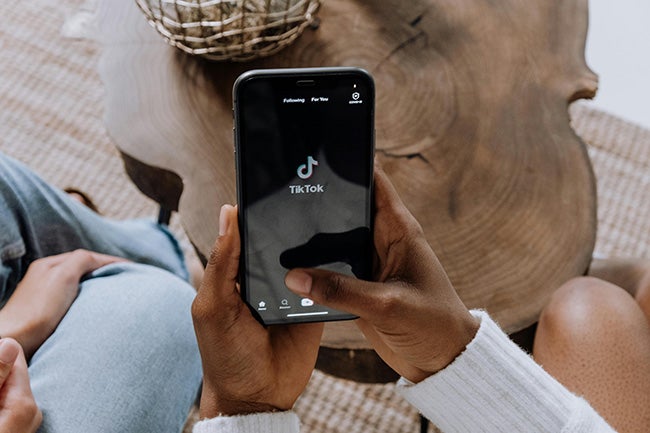How to Use Short Educational Videos to Engage the TikTok Generation in Learning

As classrooms evolve to adapt to the digital world, the role of technology in education has become a widely discussed topic. While some teachers worry that digital tools can be more of a distraction than a benefit, others are embracing technology in the classroom. One teaching approach that’s gaining traction is the use of short-form educational videos, like those found on platforms like TikTok, YouTube, and Facebook. Advocates of this strategy say that short video clips align with how today’s students prefer to learn, helping them to stay engaged and absorb information more efficiently.
The TikTok Generation and Microlearning
Short-form videos are becoming increasingly popular, especially among younger generations. Some educators have capitalized on this trend by using “microlearning” moments to deliver information in brief, easily digestible chunks rather than relying on traditional long-form content to present concepts. It’s a strategy that has shown significant promise, with some studies indicating that short videos can meaningfully enhance student engagement and improve learning outcomes. Teachers are finding that when they create learning environments that reflect how students naturally engage with content in their daily lives, the learning experience becomes more relevant and impactful.
Benefits of Video-Based Learning
As digital content continues to shape how students consume information, educators are exploring new ways to integrate multimedia in the classroom and drive engagement. Video-based learning through short educational clips offers an exciting new alternative to traditional teaching methods. Not only is video-based learning effective, it’s also fun. As with any teaching method, having a set of clear guidelines can help educators make the most of video-based instruction and avoid common pitfalls. Keep reading to learn about the benefits of video-based microlearning and discover how teachers can use short-form videos to enhance their lesson plans.
Captivating and Concise
Short-form videos, or “shorts,” are usually less than a minute long. However, people of all ages frequently find themselves scrolling through them for much longer than they intended. These videos are intentionally designed to immediately captivate users’ attention and then deliver the content as concisely as possible, preventing viewers from losing focus. Teachers can use a similar strategy to create content that is not only thought-provoking but also concise enough that it prevents students’ minds from wandering.
Adaptable and Accessible
Many adults can remember sitting through long, monotonous educational videos during school. While these videos were informative, many lacked the creative, kid-friendly elements that make them enjoyable to watch. Today, teachers have access to a wide variety of educational videos that creators have specifically designed to maximize student engagement. Educators can customize these videos to align with specific learning objectives and meet individual student needs. Many platforms provide curated collections of educational videos, making it easier for teachers to find content that aligns with curriculum standards and learning styles.
Reduced Cognitive Load
Short videos are excellent at breaking down complex topics into bite-sized chunks, which prevents students from becoming overwhelmed by too much information at once. This reduced cognitive load reduces frustration and burnout, allowing students to stay motivated—even when the material is challenging to grasp.
Knowledge Retention
Since they combine visual and auditory elements simultaneously, videos can be especially effective at conveying complicated topics in a memorable way. Many educational videos also include real-world examples and storytelling elements that further reinforce topics, providing valuable context for complex subjects. Whether a student is learning about math, science, history, literature, or another topic, videos can enhance their ability to acquire and retain knowledge.
Customizable
Incorporating videos into lesson plans allows teachers to customize learning paths to meet their students’ individual needs. They can choose from a wide range of existing videos or create their own. There are even digital tools like Edpuzzle and PlayPosit that allow educators to embed questions into videos, allowing students to test their knowledge of the material as they watch. Additionally, some platforms offer integrated measurement solutions that help educators evaluate student participation based on engagement metrics.
How to Use TikTok-Style Videos in Lesson Plans
In business settings, TikTok allows organizations to activate campaigns through the ad manager account and business center, helping them build brand awareness with targeted short-form video content. In education, these platforms can serve an entirely different purpose. Teachers can leverage short-form videos to spark creativity and increase student engagement. While debates about technology in education are ongoing, it’s clear that when used correctly, videos and other digital tools can enhance comprehension and make learning more accessible.
Personal Presentations
Short-form videos can be an excellent tool for self-expression, allowing students to communicate their thoughts and opinions in a creative way. Through the combination of visuals, voice, music, and editing, students can create presentations that reflect their personalities and perspectives. Teachers can incorporate short-form video creation into many different classroom activities, including “get to know you” presentations at the beginning of the year and learning reflections at the conclusion of a unit.
Break Topics into Digestible Segments
By breaking lessons into smaller, more manageable segments, teachers create a structured approach to navigating challenging academic content. Short-form videos are ideal for this, enabling educators to present one key concept at a time. Instead of covering everything in a lengthy lecture, teachers can use a series of brief videos to guide learners through a topic progressively. This format also gives students control over playback, allowing them to pause or rewatch when needed.
Learning Reflection
Creating short videos can be a powerful way for students to demonstrate what they’ve learned. Many teachers use videos alongside assessments or written papers to give students a more dynamic and personalized way to express their understanding. This approach supports diverse learning styles, allowing students to show not just what they’ve learned but also how they think.
Presenting Projects
In the past, school projects were often presented through posters, PowerPoint slides, or written reports. Now, students have an array of digital tools they can use to showcase their work. They can use videos and other media to creatively present key insights they’ve learned throughout a lesson or unit. This approach has the added benefit of teaching students digital literacy skills that will be extremely important in their future careers.
Create Condensed Lessons
As any educator can attest to, time is often limited in the classroom. Teachers can use video platforms to create lessons that focus on the most essential concepts in a lesson. These condensed videos are ideal for quickly introducing lessons, reviewing main ideas, or reemphasizing information from lessons delivered earlier in the school year.
Reinforce Key Concepts
Teachers can leverage video content to reinforce key concepts and ensure that their students understand course material. By using built-in analytics tools available on video platforms, educators can track how often students view content, identify which sections are most frequently replayed, and tailor future lessons accordingly.
Assign Short-Form Videos as Homework
Teachers can assign short-form videos as homework, allowing students to learn at their own pace outside the classroom. Many educational apps with short video content have user-friendly installs, making access quick and easy for students and parents. Video homework can also provide an alternative to worksheets and other paper-based homework assignments, which can reduce monotony and enhance student motivation and engagement.
Start Your Teaching Career with WGU
If you’re ready to elevate your teaching skills, a degree from WGU can help. At WGU, you can earn a bachelor’s or master’s degree in education that equips you with the competencies needed to excel in today’s tech-rich educational environment. Our degrees are accredited, industry-aligned, and can be completed mostly online. Apply today to get started.


